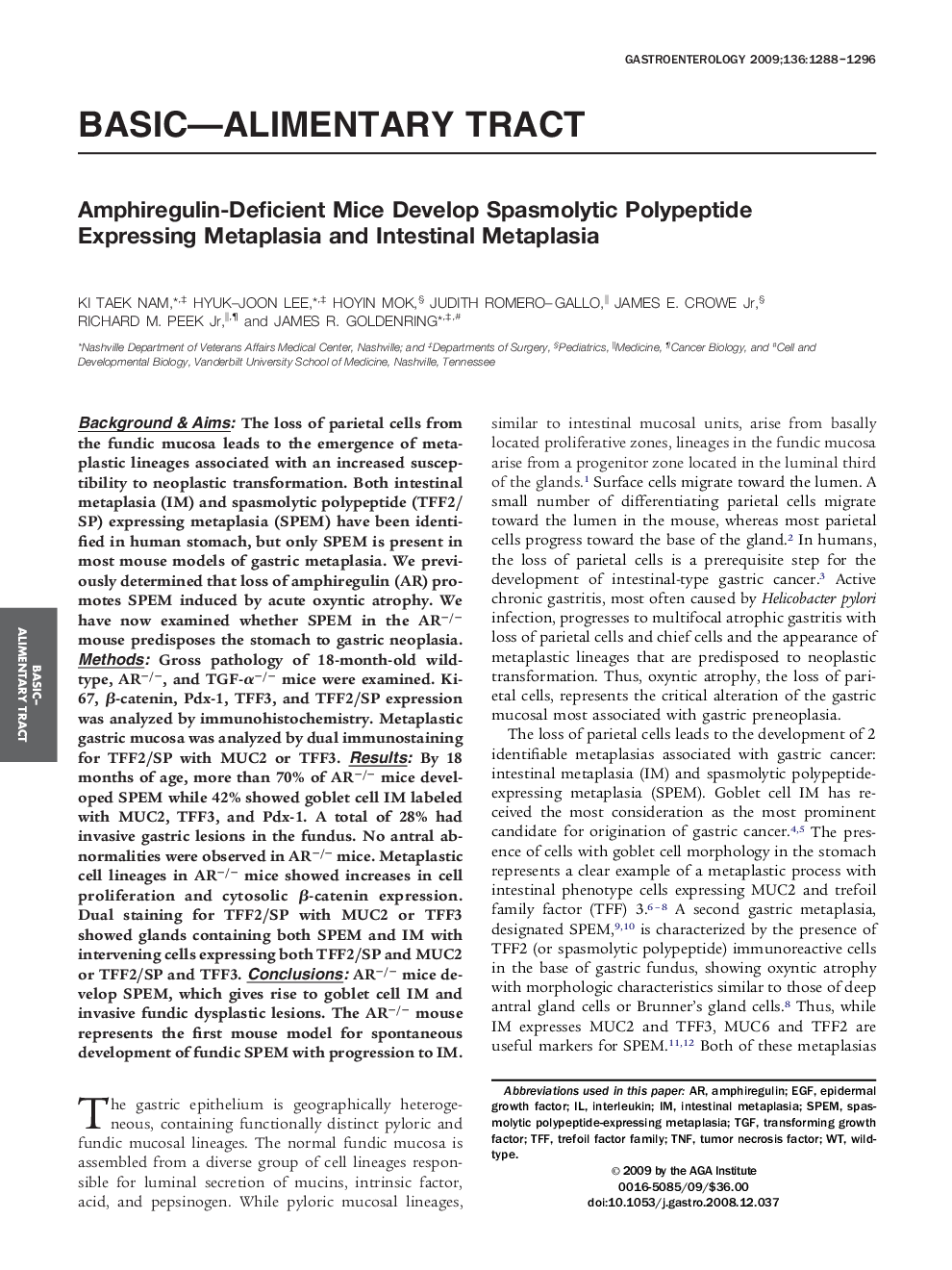| Article ID | Journal | Published Year | Pages | File Type |
|---|---|---|---|---|
| 3295836 | Gastroenterology | 2009 | 9 Pages |
Background & AimsThe loss of parietal cells from the fundic mucosa leads to the emergence of metaplastic lineages associated with an increased susceptibility to neoplastic transformation. Both intestinal metaplasia (IM) and spasmolytic polypeptide (TFF2/SP) expressing metaplasia (SPEM) have been identified in human stomach, but only SPEM is present in most mouse models of gastric metaplasia. We previously determined that loss of amphiregulin (AR) promotes SPEM induced by acute oxyntic atrophy. We have now examined whether SPEM in the AR−/− mouse predisposes the stomach to gastric neoplasia.MethodsGross pathology of 18-month-old wild-type, AR−/−, and TGF-α−/− mice were examined. Ki-67, β-catenin, Pdx-1, TFF3, and TFF2/SP expression was analyzed by immunohistochemistry. Metaplastic gastric mucosa was analyzed by dual immunostaining for TFF2/SP with MUC2 or TFF3.ResultsBy 18 months of age, more than 70% of AR−/− mice developed SPEM while 42% showed goblet cell IM labeled with MUC2, TFF3, and Pdx-1. A total of 28% had invasive gastric lesions in the fundus. No antral abnormalities were observed in AR−/− mice. Metaplastic cell lineages in AR−/− mice showed increases in cell proliferation and cytosolic β-catenin expression. Dual staining for TFF2/SP with MUC2 or TFF3 showed glands containing both SPEM and IM with intervening cells expressing both TFF2/SP and MUC2 or TFF2/SP and TFF3.ConclusionsAR−/− mice develop SPEM, which gives rise to goblet cell IM and invasive fundic dysplastic lesions. The AR−/− mouse represents the first mouse model for spontaneous development of fundic SPEM with progression to IM.
